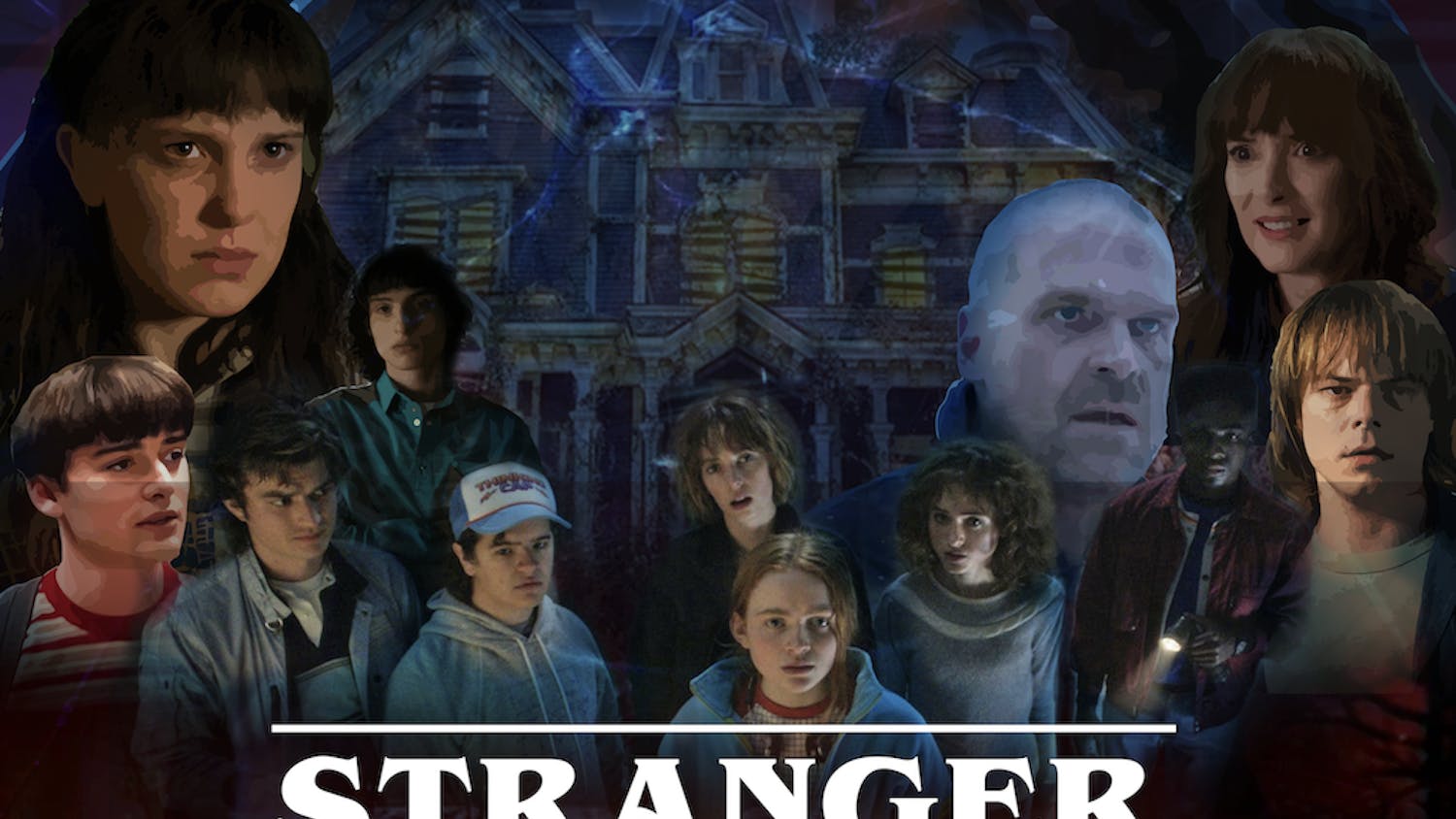The latest R-rated release floating up to box office records is “It,” the horror film closely based on Stephen King’s behemoth novel of the same name first published in 1986.
The much-anticipated film premiered this past weekend on Friday, Sept. 8 to $123 million in revenue and positive reviews from both fans and critics alike, receiving an impressive 86 percent on popular website Rotten Tomatoes.
Director Andy Muschietti, perhaps known most notably for his director role in 2013’s Mama, rarely strays from the source material, skillfully depicting the Losers’ Club and their average middle school woes: puberty, “Dazed and Confused”-like bullies, and … a murderous shape-shifting clown?
Set in the 1980s, the movie mainly follows Bill Denbrough (played by Jaeden Lieberher), the stuttering leader of the group disturbed by the disappearance of his little brother, Georgie (played by Jackson Robert Scott).
With the help of his misfit friends — a rambling crew comprised of a loudmouth, a hypochondriac, an orphan, a chubby outcast, a devout Jew and a poverty-stricken girl — Bill attempts to track down the supernatural forces taking place in the small town of Derry.
The kids quickly discover more than they bargained for when they meet Pennywise the Dancing Clown, a malicious, terrifying monster with the ability to turn into the literal manifestation of all their fears.
Sounds exactly like all of your childhood nightmares, right?
Well, despite the film’s intended terror, “It” more closely resembles a classic ’80s movie than any creature features of recent years. Surprisingly, it sells.
Perhaps what makes this film work is the individual conflicts and goals of all the main characters; beyond the antics of the evil clown, the kids are forced to deal with overbearing parents, their own awkwardness and even buying tampons. The human element, as opposed to the paranormal one, is what makes the film truly transcendent.
By no means does this discredit the inherent creepiness of Pennywise. Actor Bill Skarsgård plays the clown with a chill-inducing childishness. While he is certainly no Tim Curry, who brought the titular character to life in a 1990 miniseries adaptation, Skarsgård puts forth a certain quality that makes you unsure whether you’re supposed to giggle or cower in fear — and it’s delightfully uncomfortable.
In fact, all the performances are consistently strong throughout. Most notable is Finn Wolfhard of “Stranger Things” fame, who swears like a sailor and successfully delivers every punchline as the sarcastic best friend Richie.
Even more impressive are newcomers Sophia Lillis and Jack Dylan Grazer, who bring both depth and comedic perspective to the plot, respectively.
The film does still have some glaring issues, though, even on top of the inconvenient title — try telling anyone you’re seeing “It” and you will inevitably receive a confused stare.
The small bouts of CGI effects are often distracting and cartoonish, though the dynamic camera movements help to hide it.
The story also mistreats its token characters. The sole black character, Mike, has a reduced role in comparison to the other boys, and Beverly Marsh, the only girl of the group, often becomes a damsel in distress and sex symbol for the overtly misogynistic youth. On the bright side, at least the movie doesn’t include the controversial orgy scene from the book (really, look it up).
Still, with its ominous villain, humor and nostalgic pop culture references to things like “Street Fighter” and “New Kids on the Block,” “It” is an overall fun yet terrifying watch about friendship and facing your fears.
As you watch these seven troubled preteens come of age together, it’s hard to deny that plenty of heart is what makes “It” stand apart from other horror films often seen in theaters today.
Instead of relying on cheap plots and jump scares, the film invests time in the actual lives of each of its characters.
If you prefer your scary movies darker, have no fear: the frights aren’t nearly over yet.
As the movie slyly likes to remind us, this is just chapter one.





